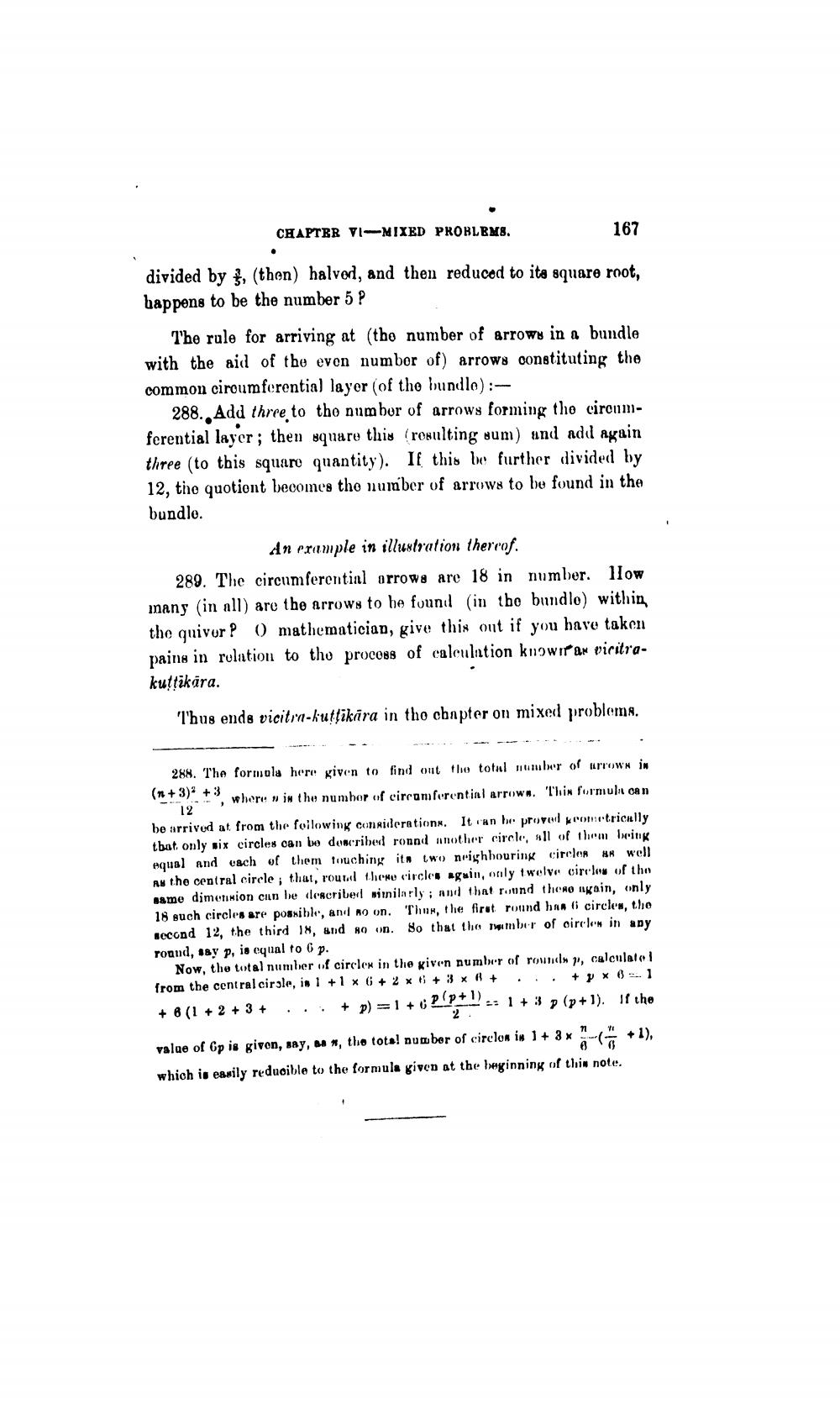________________
CHAPTER VI–MIXED PROBLEM.
167
CHAPTER VIMIXED PROBLEMS.
167
divided by , (then) halvod, and then reduced to its square root, happens to be the number 5 ?
The rule for arriving at the number of arrow in a bundle with the aid of the even number of) arrows constituting the common circumferential layer of the bundle):
288.. Add three to the number of arrows forming the circumferential layer; then square this (rosulting sum) and add again three to this square quantity). If this be further divided by 12, the quotiont becomes the number of arrows to be found in the bundle.
An crample in illustration thereof. 289. The circumferential orrows are 18 in number. llow many in all) are the arrows to be found in the bundlo) within the quivur ? () mathematician, give this out if you have taken paine in relation to the process of calculation knowit ar vicitrakuttikära.
Thus ends vicitra-kuttikära in the chapter on mixed problems.
288. The formula here given to find out the total number of arrOWN IN (n+3)' + 3
where in the numbor of circumferentini arrow. This formulit can 12 be arrived at from the following considerations. It can be proved krometrically tbat only six circles can be doncribed ronnd another circle, 11 of them being equal and each of them touching its two neighbouring circle HR well All the central circle ; that, round theme circles again, only twelve circle of the same dimotinion can be describedl sirnilarly; and that round the ongoin, only 18 euch circles are possible, and no on. Thus, the first round him ii circles, the second 12, the third 18, and so on. 8o that the twmber of circle in any round, 18y p, is equal to p.
Now, the total number of circles in the given number of rou , calculated from the central cirsle, in 1 +1 6+ 2 + 3 H + .. . + y * B 1 + 6(1 + 2 + 3 + ... + p) = 1 + 2?*: 1 + 3 p (p+1). If the
2
.
+ 1).
value of Op is given, say, *, the total number of circlon in 1 + 8x which is easily reducible to the formula given at the beginning of this note.




